Compal TS30EG laptop (AMD 80x586, 8 Mb RAM)
 An interesting copy of the laptop company Compal, built on the basis of the processor AMD 80x585 P75 . The bottom line is that this is physically a socket 80486 processor, but the processor itself in integer operations equated to the speed of the first 75Mhz. I got this configuration: the device itself, a removable FDD module (drive) and a power supply. Attention, a lot of great photos!
An interesting copy of the laptop company Compal, built on the basis of the processor AMD 80x585 P75 . The bottom line is that this is physically a socket 80486 processor, but the processor itself in integer operations equated to the speed of the first 75Mhz. I got this configuration: the device itself, a removable FDD module (drive) and a power supply. Attention, a lot of great photos!Here it is in the open form:
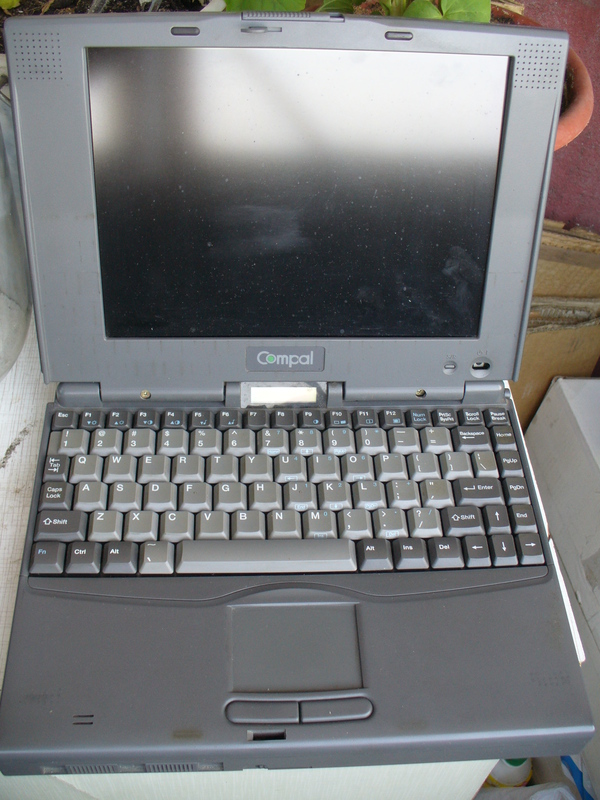
Below, under the main screen, there is a small LCD screen that displays the current status of the numlock key, the icon for accessing the hard disk drive, the drive status, charging status, or battery life. Conveniently. On top of the speakers screen. The keyboard is a thoroughbred American and to top it off a regular touchpad that supports double-click.
')
View from the left side:
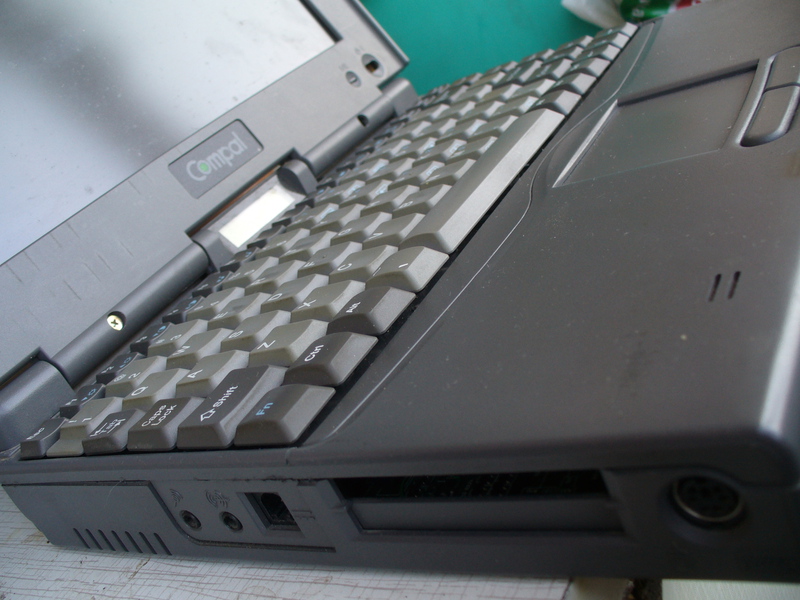
On the left we have: PS / 2 input for keyboard or mouse; two PCMCIA sockets (the curtain is broken off at the top); input for power plug; speaker output and microphone input.
View from the right side:

On the right is a removable drive module and a battery (dead of course). By the way, an interesting detail: the power supply can be in place for the drive, that is, the drive is pulled out and the power supply is inserted into the slot instead. Comfortable. Well, you can work with the drive, and from the power supply in this case is a regular plug into the laptop.
Back view:
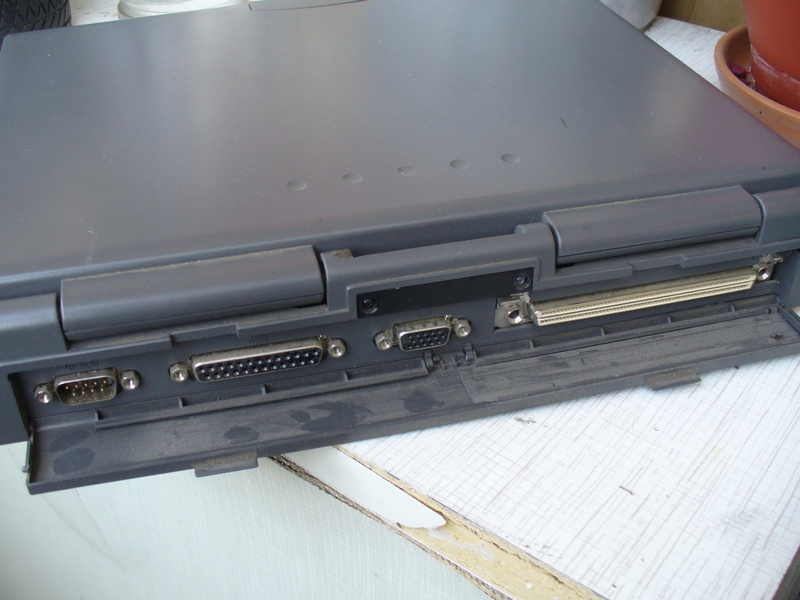
Everything is simple: COM, LPT, VGA and some kind of comb most likely for a docking station, or perhaps some kind of variation on the ISA or VLC bus. History is silent, and God bless her. Oh yeah, there is still something like an infrared transceiver (on the black tab).
Here is the power supply:

Well, it's time to turn on the device. Of course, the CMOS battery is dead, but nothing. We press F2
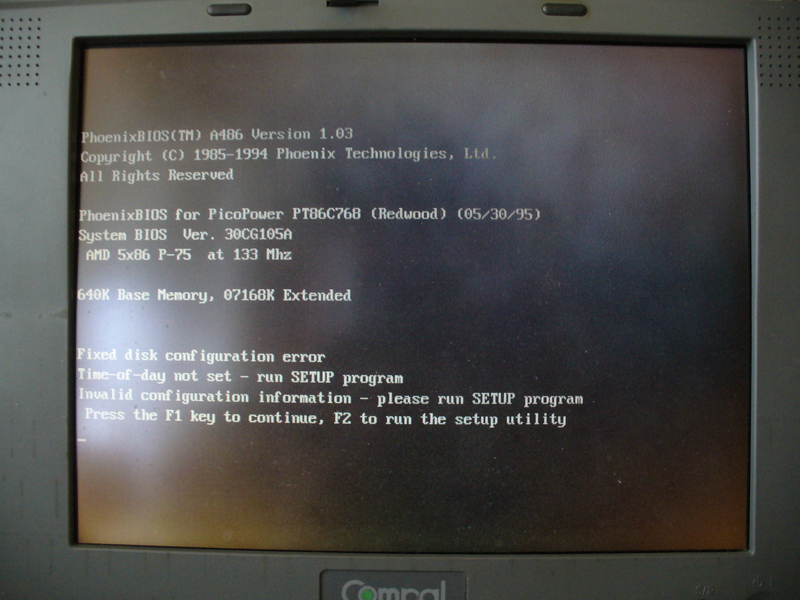
Here we are kindly told what is wrong with our system:

We expose autodetection hards:

And boot from disk C:

And everything, 95 Windows loaded. I didn’t take a picture, because surely everyone has seen 95 Windows, nothing special. Everything is working. There is sound (ESS 688). Word 97, Excel, everything. And then I thought about the topic of transferring files to the subject (well, at least CPU-Z early for Windows 95). From the available - drive. Yeah, I thought - it’s right that when I upgraded my main desktop I didn’t throw the floppy out of it, right now I’ll insert and format the floppy disk ...
And then I was waiting for a bummer number one: the flop was connected, but did not work. Okay, I open the sistemnik and see that I flop on the flop "upside down", a shifter, in other words. I scold myself, sort out half the system to take the flop and see what happens to him:

The worst was confirmed - there is a hole in the flop controller, although the power fuse is safe and sound. Sorry goodbye MITSUMI, a good flop. I go through my flop, I decide not to immediately insert into the main sistemnik (very much hemorrhoid) and train on cats. To this end, the light of God is removed from the closet of the first:

New-fashioned (by relative standards) SAMSUNG - Choto rumbles, tries to twist, but does not read or write. It should go to the same place where MITSUMI proceeded, namely, to the dustbin. But all the dusty EPSON shaggy year 89 earned normally after cleaning. We put on the main desktop, collect, run, copy to the diskette CPU-Z. I turn on the laptop, insert the floppy disk and try to open it, and here, as many have probably guessed, I was expected to be number two - the disk drive in the laptop does not see the floppy disk at all. Does not format, does not write, does not read. Disassembled, cleaned everything - but no, it did not take off. Well, in the end there is a COM-port and a hyper-terminal, so you can use a null-modem cable. But in the absence of COM-connectors file transfer is postponed. For myself, wrote down a wish-list: buy a couple of flopik, while still being sold here and there.
Well, let's show the insides better, but I know that this is the most interesting. For example, extended memory is located below the computer:
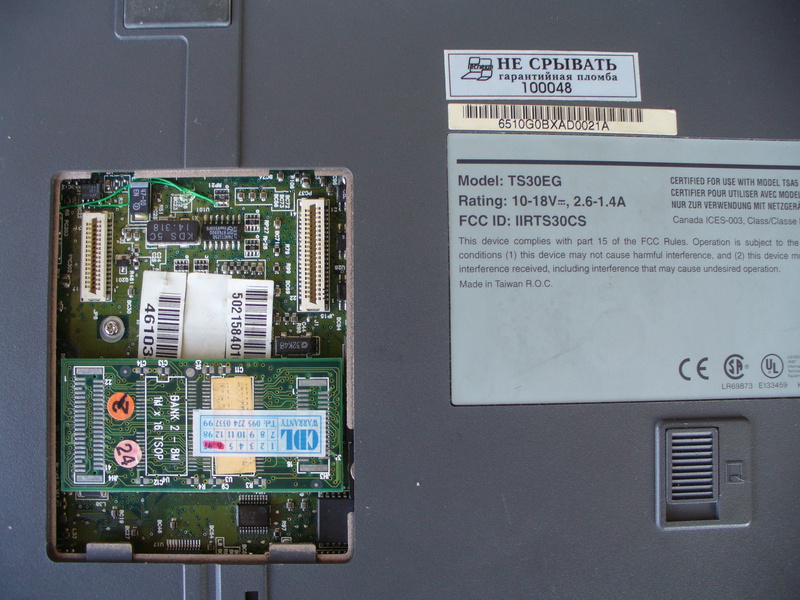
And here is a 8Mb pulled out memory bar:

Accum:
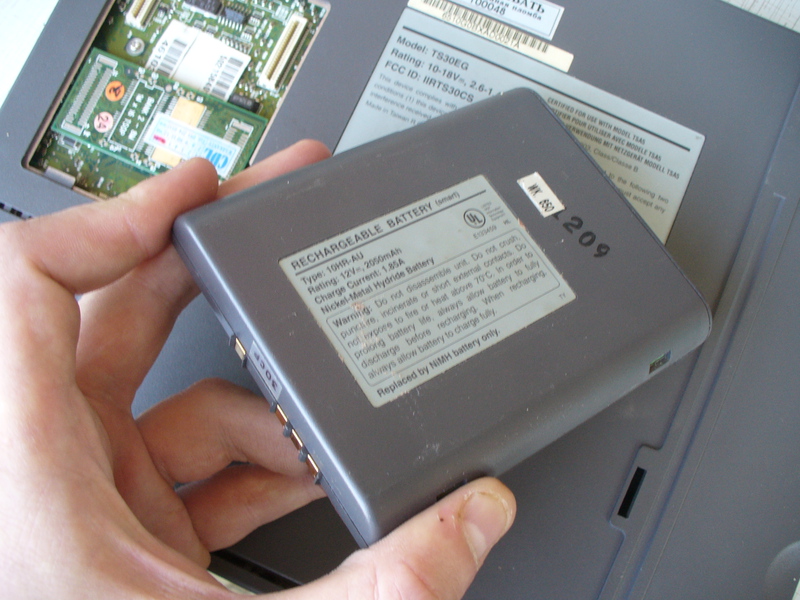
But the same ill-fated flop:

Now we throw off the keyboard and get to the hard drive. Nothing unusual, IDE, where there were many:

The most interesting thing to the left, under the black piece of iron, which serves as a passive cooling. Turn off the four screws and see the heart of the laptop in all its glory:

The processor is decoupled on the "daughter" (daughter board), which is inserted into the main through special connectors. In the next photo it will be clearly visible. Near the right is an unusual little "daughter" with jumpers that assign the work of the clocker. That is, you can drive, apparently up to 140Mhz vs. 133Mhz standard. Here, the motherboard is visible, and the "daughter" processor and the "daughter" winners are removed:

Separately, the "daughter" processor (top view):

"Daughter" -processor (bottom view):
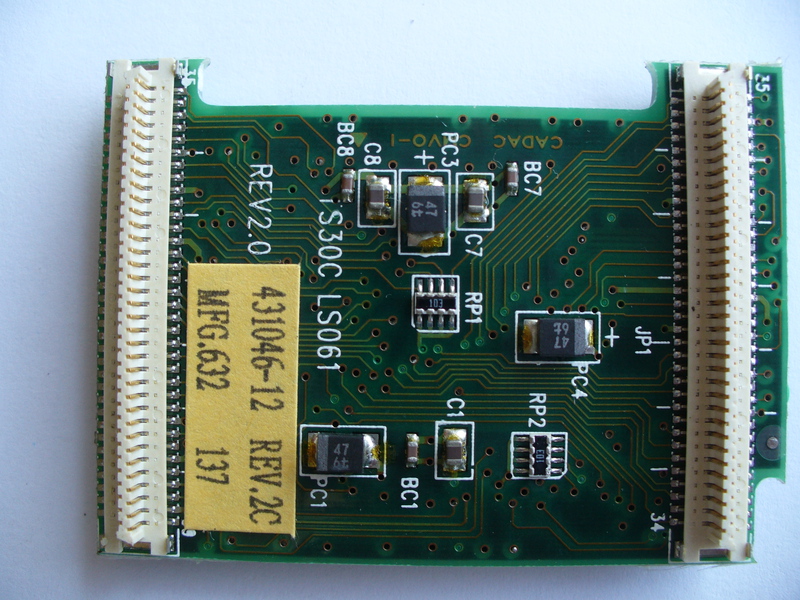
"Daughter" - jumpers:
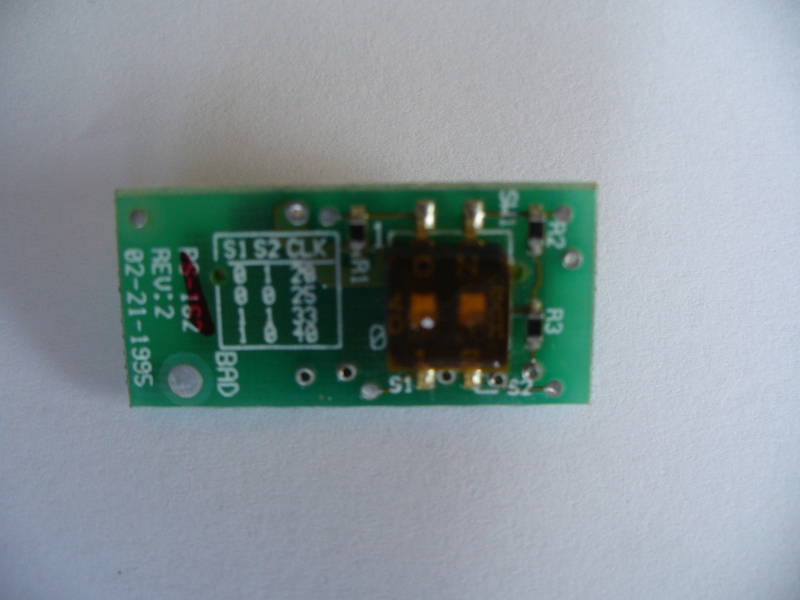
Then I tried to remove the cover completely, but I spat, since the plastic is already falling apart - the latches break, and it looks like to remove the cover - you need to disassemble and turn off the matrix and only then ... I didn't master it, in short. Okay, we collect everything back, turn it on and ... There was a bummer number three waiting for me - a black screen, the laptop won't start. Assembled, disassembled several times, but the situation has not changed. Poziant is more dead than alive. This ends the story, and the laptop is sent to the closet or to the new owner, if he writes to me why he needs this unit in private.
Good luck to all!
UPD: Wound up again. Somewhere there was no contact.
Source: https://habr.com/ru/post/151990/
All Articles